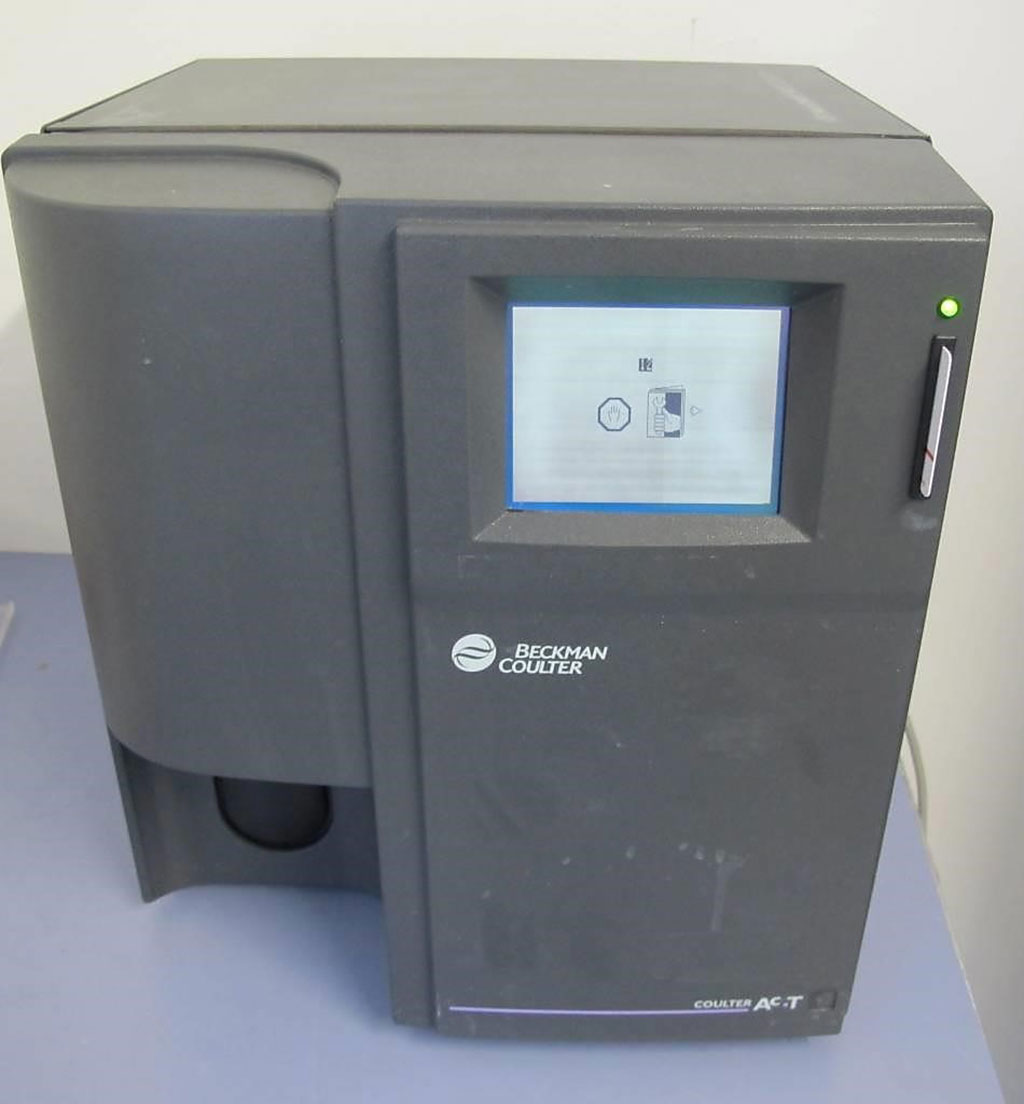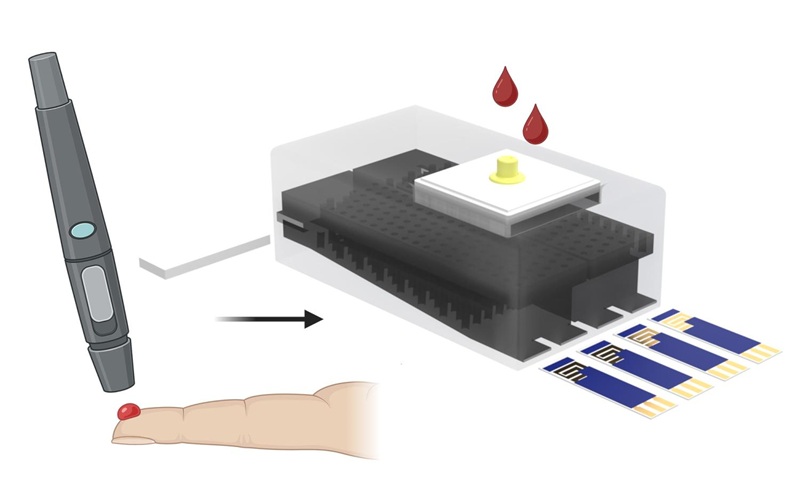Innate Lymphoid Cells Analyzed at the Maternal-Fetal Interface
By LabMedica International staff writers
Posted on 26 May 2021
Preterm birth (PTB) is one of the major causes of neonatal morbidity and mortality worldwide. It is commonly accepted that the act of giving birth is the final step in a proinflammatory signaling cascade, orchestrated by an intrauterine milieu coupled to hormonal cues.Posted on 26 May 2021
The gestational period is comprised of decidualization, placentation and fetal development and requires uterine quiescence and the production of both anti- and proinflammatory cytokines from maternal and fetal cells. Throughout pregnancy, three distinct biological periods characterized by different immunological microenvironments occur.

Image: The Beckman Coulter AcT Diff automatic cell counter (Photo courtesy of Beckman Coulter)
A team of Medical Scientists at the University of Coimbra (Coimbra, Portugal) analyzed 15 full-term delivery samples and six preterm delivery samples (PTB). In the full-term group (FTB) peripheral blood was taken during routine blood analysis, on three occasions: 1st, 2nd and 3rd trimester. After delivery, peripheral blood, cord blood and placenta were collected. In the PTB group, peripheral blood samples were obtained on two occasions: before and 24 hours after treatment with progesterone.
The team dissected the placenta and the decidual tissue and lymphocytes were isolated from the decidua basalis and adjacent tissue (villi). Cells were counted on a Beckman Coulter AcT Diff automatic cell counter (Beckman Coulter, Brea, CA, USA) and isolated lymphocytes was placed in a cytometry tube and labeled with primary antibodies. Stained samples were acquired on a BD FACS Canto II flow cytometer (BD Biosciences, San Jose, CA, USA) Interleukin 17 (IL-17), IL-22, interferon gamma (IFN-γ) and IL-4 were determined by ELISA kits (Biolegend Legend Max, San Diego, CA, USA) and read on a Bio-Rad model 600 microplate reader (Bio-Rad, Hercules, CA, USA).
The investigators observed significantly increased relative frequencies of innate lymphoid cells 2 (ILC2) and ILC3 in the decidua, as well as an increase of ILC2 in cord blood samples in PTB group, compared to FTB samples. They also found a decrease in IFN-γ in peripheral blood samples of the PTB group, suggesting a functional withdrawal. Additionally, IL-4, IL-17, IL-22 levels were similar in PTB and FTB groups, denoting a relevant role in mediating labor.
The authors concluded that labor might be characterized by decreased tissue remodeling and repair functions, accompanied by a marked inflammatory response, due to high levels of ILC2 and ILC3. Also, the ELISA studies propose that labor might be characterized by a functional IFN- γ withdrawal. However, there was no significant decline in ILC1 population that could account for this result. The study was published on May 6, 2021 in the journal BMC Immunology.
Related Links:
University of Coimbra
Beckman Coulter
BD Biosciences
Biolegend Legend
Bio-Rad














